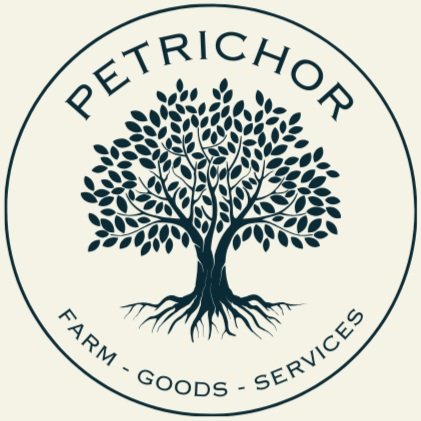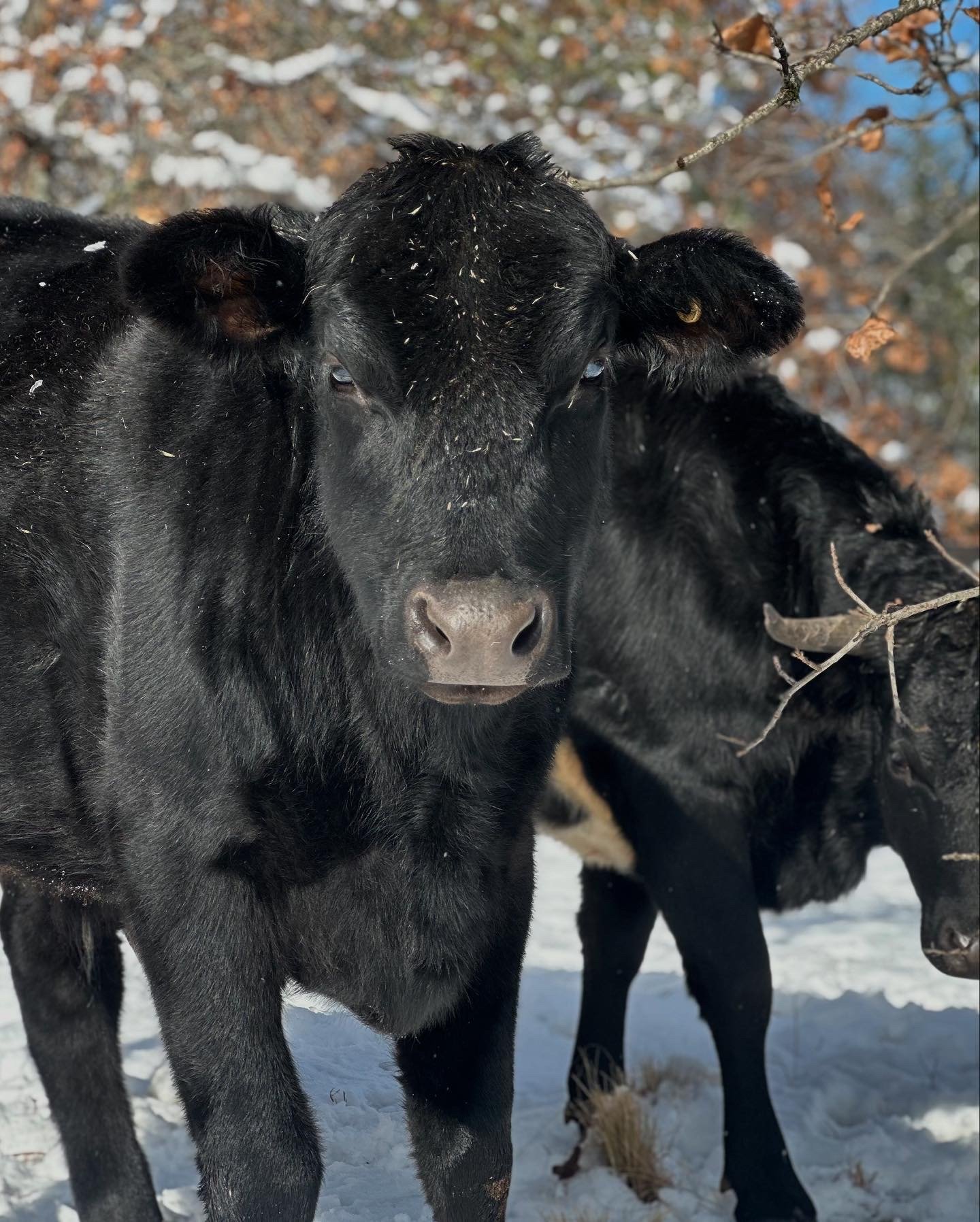Up Close & Personal - Ferdinand’s Story
If you’ve been cattle shopping lately, you know how crazy it is out there. It’s not uncommon to see bottle calves getting SNATCHED up for 900+ bucks, and it’s been that way for about a year now. But back in 2023, that wasn’t the case.
Getting cows was high on our list of priorities when we bought the farm. Beef is probably our favorite meat, and we can go through a LOT of tacos, hamburgers, and lasagne! Sourcing quality beef was tough and expensive, so raising our own was #Goals. And that’s why, when I saw a group of affordable bottle calves, I headed out with a pocket full of cash and heart full of excitement. The dream was coming true. We were starting our own little ‘herd’!
These were pre-truck days… I was toodlin’ around in our family minivan, pretending it could do everything I needed it to do. It had already brought home a group of baby goats, and we’d got them past the need for bottles with no trouble. Calves weren’t going to be that much harder, right? But the hard thing about starting anything is the newness. You just can’t know what you don’t know. It’s no one’s fault... It’s just how it is, and, unless you have someone with experience holding your hand, you have to learn some things the hard way.
I didn’t know it then, but this was going to be one of those times.
After driving an hour and a half and turning down a long driveway in the middle of nowhere, I pulled up in front of a large pen with babies scattered around. Some were snoozing, others stood and curiously watched me step out of the van. They were a colorful assortment of holsteins, jerseys, and various chocolate and black breeds. Recent rains had turned their pen into mush, but I knew that was just farm life sometimes.
Since I had a long drive ahead of me, we didn’t waste much time finding the ones I was interested in. I helped band the steers, gathered healthcare records, and was assured they’d received colostrum from their mothers before being brought to her place.
Now? Well, let’s just say that hindsight is 20/20.
On the way home, they pooped soft, yellow poo all over the tarp I’d laid down for them. They were quiet. NOW I know… they weren’t acting normal. But I’d never handled calves this young before. Maybe they were like my own babies, and the first week or two of their lives were when they were the calmest?
When I got home, the family came out to unload. Shaky, but perky steps into their new barnyard made me feel a little more confident. They were just tired from all the travel they’d had to undergo. Give them a couple days to adjust and they’d be alright!
But they weren’t.
Giving them bottles was tough, right from the start. The promise I’d received that they were each taking a bottle apiece proved untrue. Getting more than ¼ a bottle down them at a time was all I could do, and their energy never improved.
I can’t remember, exactly, the timeline of their slow fade. I was caught up in always watching the clock to see if I should try feeding them again. Googling their symptoms. Running to the feed store for a different supplement. Getting advice from the neighbor, who’d owned hundreds of cattle over his lifetime. Lying awake at night, wondering what to do with them.
If you’ve never tube-fed a calf before, you can’t know how terrifying it is. I probably watched a dozen YouTube videos, and still… Ultimately, I had to just do it scared.
Come here, poor things, I thought, lugging my tote of treatment options into their stall. The weird tube contraption stuck out like a threat. Who wants to go first? The obvious choice was to try with the weakest one. I straddled him, trying to hold him steady and position the tube feeder while quieting my shaky breath. I know it’s weird, buddy… but I need you to swallow this, mkay? If you don’t, you’ll drown. Please… just take it…
It didn’t matter that I knew, in my head, that I could feel the difference between the trachea and esophagus. Didn’t matter that I tracked it down the correct side of the throat. Didn’t matter that I could see it swallow. I still wasn’t sure I wasn’t fixing to seal his fate as I tipped up the bottle.
But I didn’t. At least I can say he didn’t die by drowning. None of them did. But they also still didn’t get what they needed. They still continued to fade. So the next day, I carried their slimy, diarrhea covered bodies back to the tarp-covered back of my van for a trip to the vet.
I told the vet everything I’d been told by the seller. Told him everything I’d tried. Everything they’d received. And he could easily see what we were up against.
So the tests began. I can’t remember what all was included, but there were cultures, bloodwork, and ear notches. Salmonella came back negative. Campylobacter came back negative. BVD came back negative.
They each got 2 bags of fluids and vitamins via IV and we came home with new meds to try.
And we kept going. Kept trying to feed via bottle, switching to tube feeds if they wouldn’t suck. Fought for their lives for another week and a half. In the midst of it, I ended up getting sick myself… reflecting many of their symptoms. Wild!
It was such a rollercoaster. Every time I got a good feeding in, I’d heave a sigh of relief thinking we’d rounded a new corner. But, inevitably, the next one wouldn’t go well. And, finally, it happened. I walked out to the barn and found one lying still and cold, finally having lost the battle.
Three of them dropped off over the span of a few days. The exhaustion was overwhelming, but what was even harder to handle was the sense of failure. I’d been responsible for these little guys, and I’d let them down. I’d been responsible for this investment, and I’d let us down. Intellectually, I knew that sh*t just happens sometimes… but on a somatic level, that’s not what lived in my body.
But then… the one remaining calf rallied his strength and began improving. He started taking full bottles. Light came back into his eyes and he’d watch for me. I’d hear him moo when I came outside, and he started meeting me at the gate. Finally, we had one in the clear.
Over the next year and half, he continued to be my learning curve. His penchant for getting hurt had me treating eye injuries and abscesses, giving shots, and just generally having to keep a watchful eye on him! Honestly, I can’t imagine Petrichor Farm without Ferdinand.
But that’s part of farming.
Ferdinand was always intended to feed our family, and he’ll fulfill that destiny (as the most expensive beef on the planet!) this fall. I’m not ashamed to say that I fully anticipate tears when that day comes. I think that, if you’re farming in a way that connects to your land and animals, that’s also part of farming. I never want to become so detached and formulaic that I feel nothing when it’s harvest time. Honoring their life, caring for the quality of that life, comes naturally when you care about the animal itself.
Knowing where your food comes from can get as intimate as you have capacity for. Maybe it’s finding your farmer on social media and following their journey through reels and images. It could be a farm visit, or even an in-person class about processing. You can find your farmer at a Farmers Market and get to know them. Whatever your method, I think it’s important to recognize the cost of eating… whatever your dietary commitments.
Eating is costly in a variety of ways. Animals give their lives. Plants undergo radical changes to their form (and science has fascinating insights into their complexity). Farmers carry the mental, physical, and financial load of managing it all. The environment is impacted, for better or worse, depending on the methods used.
I hope that telling the stories of the food produced at Petrichor Farm you can come to a deeper appreciation for what goes in to supporting YOUR life. At Petrichor Farm, we’re committed to working to ensure your food lives its best life… so you can go live yours.







